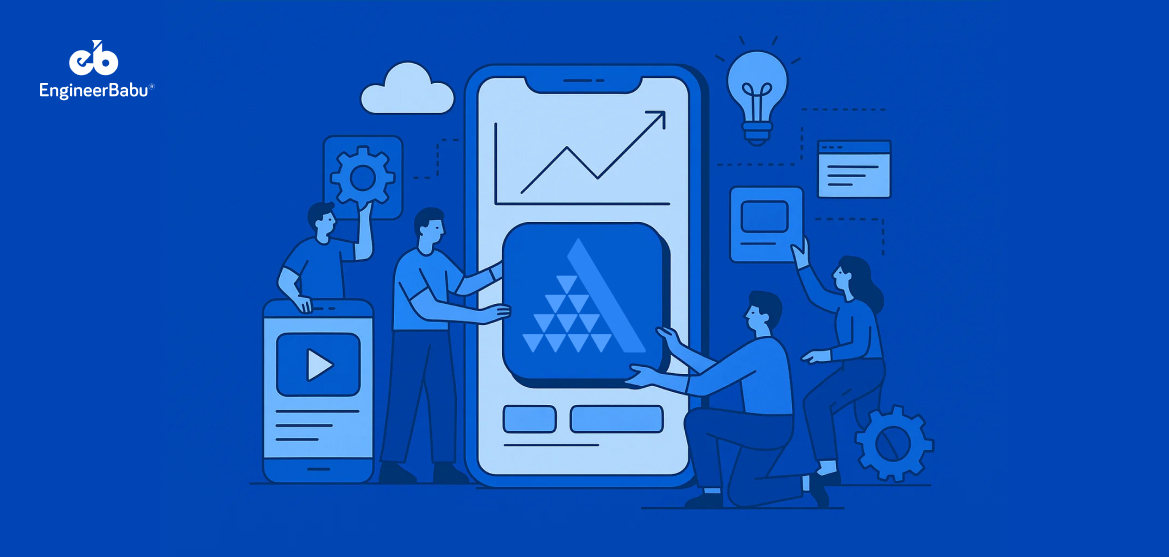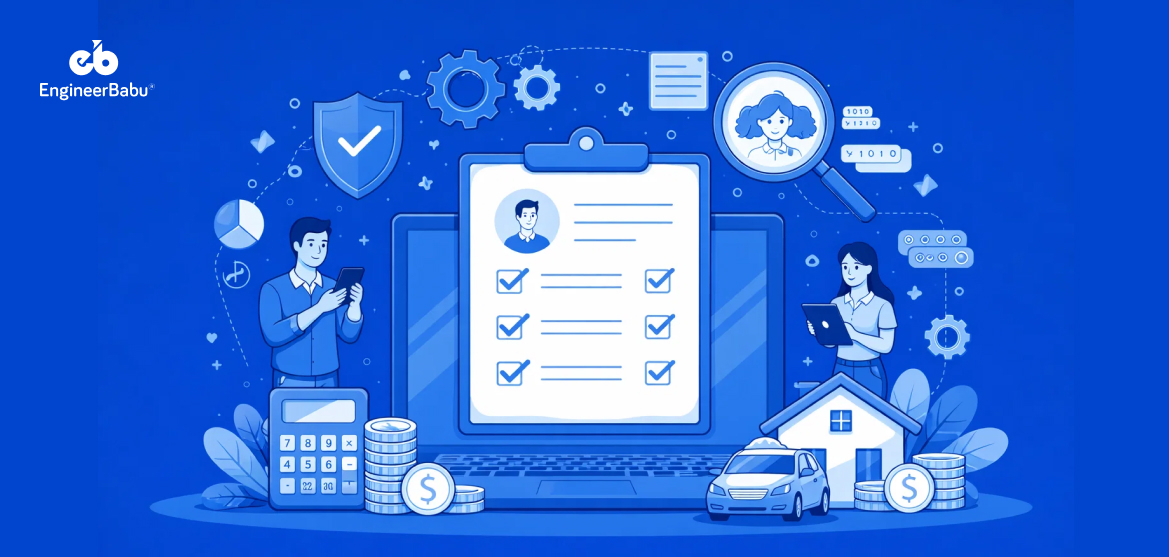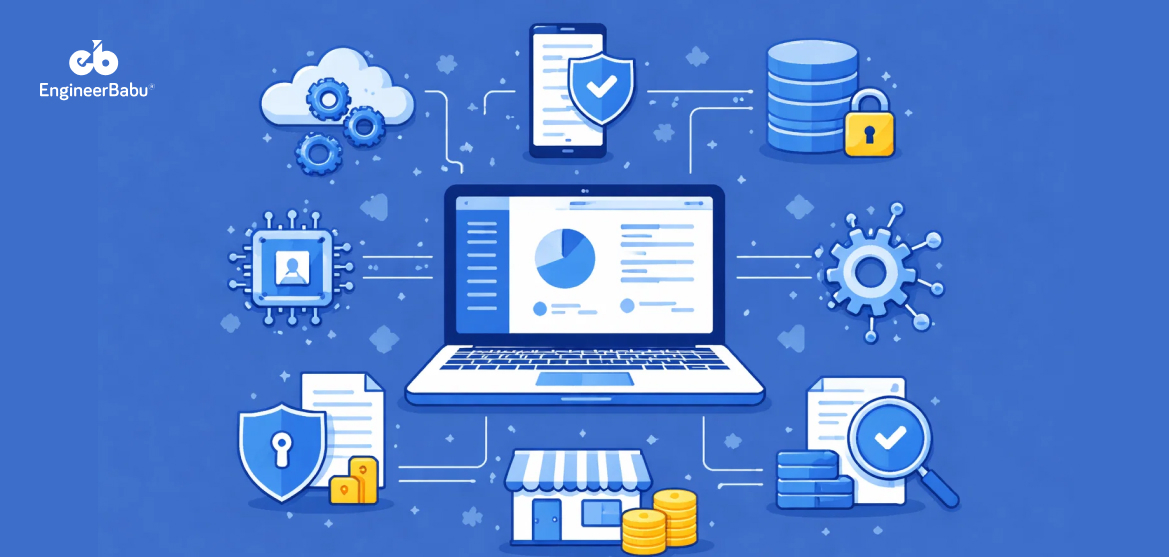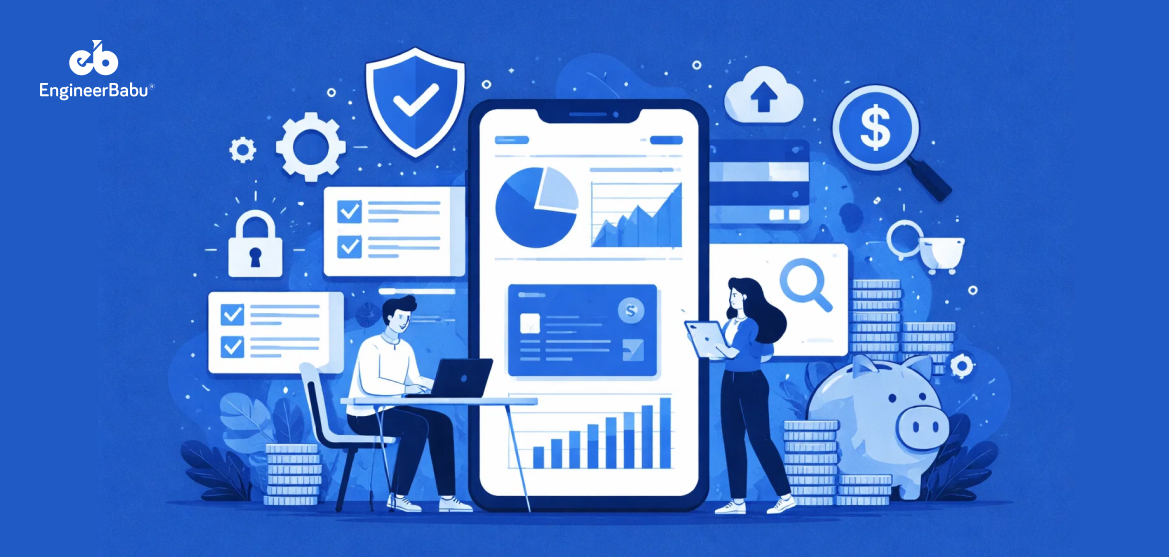I think we all can agree on one thing: Apps like Angel One have changed the game for millions of retail investors in India. Think about this: by February 2025, Angel One had brought its client base to over 30 million people (Business Standard), an almost 43 percent jump compared to the same time the year before.
That level of reach didn’t come from accident. It came from deliberate choices like smart technology, clean design, and solid regulatory footing. So, if you’re the one searching for how to build an app like Angel One, you need an equally deliberate plan.
Here’s how to go from idea to launch, building something people return to, not just once, but again and again. Let’s jump right into the steps.
Step-by-Step Process To Build An App Like Angel One
Before we dive in, think of this as a practical path you can follow from idea to launch. We’ll start with research and compliance, move into features, design, and the tech stack, then cover integrations, security, and go-to-market.
Maybe your users are first-timers who need hand-holding, or maybe they’re active traders who care about speed. Either way, the steps below show what to do, in what order, and why each choice matters.
Step 1: Research and Planning
Every great app starts with understanding the people who will use it. Are you targeting first-time investors who need education, or active traders who care about speed and advanced charting?
Maybe your opportunity lies in smaller towns, where apps like Angel One grew rapidly by serving people who were ignored by traditional brokers.
Look at competitors. Apps like Groww emphasise simplicity, while trading platforms like Zerodha focus on low-cost trading, and Angel One positioned itself as a one-stop platform with research tools and education modules.
Identifying these gaps helps you decide whether to double down on usability, pricing, or extra features.
Step 2: Legal and Compliance Setup
Finance is a heavily regulated industry, and with good reason. Before a single line of code is written, you’ll need to align with SEBI’s guidelines, set up KYC and AML processes, and work with depositories like CDSL or NSDL if you’re in India. The same applies globally, different countries have their own licensing frameworks.
If we talk about Angel One, they invested early in digital KYC, letting users complete sign-up in minutes without endless paperwork. That balance of compliance and user experience is key.
Remember, cutting corners on regulation may save time short term, but it will block partnerships and shake user trust. Treat compliance as a foundation, not an obstacle.
Step 3: Identify Core Features
Once the groundwork is done, list the features your app absolutely needs at launch. These usually include:
- Simple registration and KYC verification
- Real-time market data and interactive charts
- Fast order placement (market, limit, stop-loss)
- Portfolio tracking with gains and losses
- Notifications and alerts for trades or news
Optional add-ons like educational content, screeners, or social trading can wait. Angel One built loyalty by starting with essentials, then layering extras like expert research and news feeds. Your goal in version one is to give users confidence that trades are smooth, data is accurate, and the interface is easy. Everything else can follow.
Step 4: Monetization Strategy
An app can only scale if it earns revenue, without it, there is no point in having one, right? The most common models are:
- Commissions per trade
- Subscription tiers with premium analysis tools
- Referral incentives that grow the user base
- In-app purchases like advanced screeners or reports
Angel One grew through a mix of broking, advisory, and lending services, showing the value of multiple streams. So, when considering how to build an app like Angel One, don’t just copy their model.
Instead, ask yourself what your specific audience values enough to pay for. For beginners, education may be premium. For active traders, it may be real-time analytics.
Step 5: Roadmap and Project Planning
Building a trading app isn’t a single sprint, it’s a marathon broken into stages. Typically, teams move through:
- Design and wireframes
- Minimum Viable Product (MVP development)
- Beta launch with early adopters
- Full rollout with marketing
- Continuous updates
Set milestones for each phase, assign ownership across teams, and track progress with agile tools. Angel One rolled out mobile-first, then expanded to desktop and advanced tools once adoption grew. Following a phased roadmap keeps the project realistic and prevents burnout while giving stakeholders visibility.
Step 6: Design and Prototyping
Design decides whether users stay or churn. How do you start?
Wireframe your core flows like onboarding, placing a trade, viewing a portfolio and test them with real users before moving ahead. Also, look for friction: is it clear where to buy a stock? Do charts load quickly? Can beginners understand the dashboard?
Angel One, for instance, focused heavily on clarity and offered dashboards that didn’t overwhelm even new investors. A clickable prototype can save weeks of coding by spotting usability issues early.
Note: people don’t just want powerful tools, they want tools that feel effortless.
Step 7: Development Setup
Now it’s time to set the foundation. Decide on your stack. Cross-platform frameworks like React Native or Flutter are great for iOS development and Android app development. For the backend, Node.js or Django handles scalability well. Choose a database that’s both reliable and secure, such as PostgreSQL or MongoDB.
Beyond the stack, set up your workflow. Version control with Git, automated builds with CI/CD, and project tracking with Jira or Trello keep teams aligned. Angel One scaled smoothly because its systems were built for growth from the start. Laying this groundwork early prevents chaos later.
Step 8: Build and Integration
This is where ideas turn into a working product. On the frontend, developers create clean, responsive screens. On the backend, APIs handle orders, user authentication, and real-time updates. Integration brings it all together:
- Market data providers for live prices
- Payment gateways for deposits and withdrawals
- KYC solutions for identity verification
- Push notification services for alerts
- Analytics tools for usage tracking
Angel One excels here by streaming real-time data that updates instantly, keeping traders engaged. If these integrations are unreliable, users won’t trust the app. Focus on seamless performance, especially during market peaks.
Step 9: Security and Testing
Nothing kills a financial app faster than a security breach. So, encrypt all sensitive data, use multi-factor authentication, and enable biometric logins where possible. Fraud detection systems add another layer of protection.
Testing should be relentless: unit tests for components, integration tests for APIs, stress tests for market hours when traffic spikes, and user acceptance testing to check real-world usability.
Angel One built trust by adding secure logins and quick fraud alerts. Users must feel safe every time they log in.
Step 10: Launch and Deployment
Getting into app stores is only half the job. The other half is making people care. Prepare optimised listings with clear descriptions and screenshots. Plan a marketing push using social media, referral programs, or influencer partnerships. Angel One used referral bonuses effectively to scale its client base fast.
Remember, a flashy launch means little if users don’t stay. Focus on retention: onboarding flows should be simple, notifications should add value, and early customer support should be proactive. A good launch sets momentum that compounds over time.
Step 11: Post-launch Support and Iteration
Your app will evolve after launch. Collect user feedback, analyse crash reports, and monitor engagement metrics. Release updates not just for bug fixes but also for improvements that users ask for.
Angel One kept growing by introducing new tools and adding educational content for beginners. That’s why iteration matters. Markets change, regulations shift, and user expectations rise. A trading app that stays still will quickly feel outdated. Keep listening, keep shipping, and keep improving.
Conclusion
Learning how to build an app like Angel One is less about copying features and more about following a process. Research deeply, comply with regulations, design for clarity, develop with scale in mind, and keep iterating long after launch.
Apps succeed not by being perfect at day one, but by earning trust over time. If you combine thoughtful planning with technical execution, your app can become more than just a tool, it can become a habit for investors.
However, if you want a simple alternative, it’s always better to contact a professional fintech app development company. We at EngineerBabu can take you from concept to a secure, compliant trading app without the guesswork.
Contact us today for your trading app, like Angel One or hire fintech developers to augment your team for MVP scoping, SEBI-compliant KYC, and real-time market data integrations.
FAQs
1) How much does it cost to build a trading app like Angel One?
Budgets vary by scope, security needs, and integrations. A lean MVP with KYC, live quotes, basic order types, and a portfolio view can start in the mid five figures. Apps with advanced charting, options trading, research, and multi-broker connectivity can reach the low to mid six figures. Ask for a feature-by-feature estimate so you can phase the work and control spend.
2) How long does it take to launch the first version?
A focused MVP typically takes 12 to 20 weeks. This includes discovery, UX, backend APIs, mobile builds, KYC and payments setup, testing, and app store submission. If you add complex features like margin, options, or deep analytics, plan for additional sprints. A staged roadmap helps you ship faster and learn from real users.
3) What compliance and licenses are required in India?
You will follow SEBI rules, implement KYC and AML, and work with depositories such as CDSL or NSDL through a registered broker. You also need strong data privacy controls and secure storage for customer information. Treat compliance as a product requirement. Build it into onboarding, consent flows, and audit logs from day one.
4) Which features should I include in the MVP?
Start with the essentials that prove product value: simple onboarding and KYC, real-time quotes, market and limit orders, a clean portfolio dashboard, and alerts. You can add screeners, research, or education later. If you are exploring how to build an app like Angel One, keep version one focused on speed, clarity, and trust.
5) Why choose EngineerBabu for this project?
EngineerBabu can take you from idea to launch with a full-stack team. We handle discovery, UX, React Native or Flutter mobile apps, Node.js or Django backends, KYC and payment integrations, real-time market data, security hardening, and automated testing. We also plan post-launch iterations so you can scale features safely. If you want a partner who understands how to build an app like Angel One and can execute end-to-end, we are ready to help.




